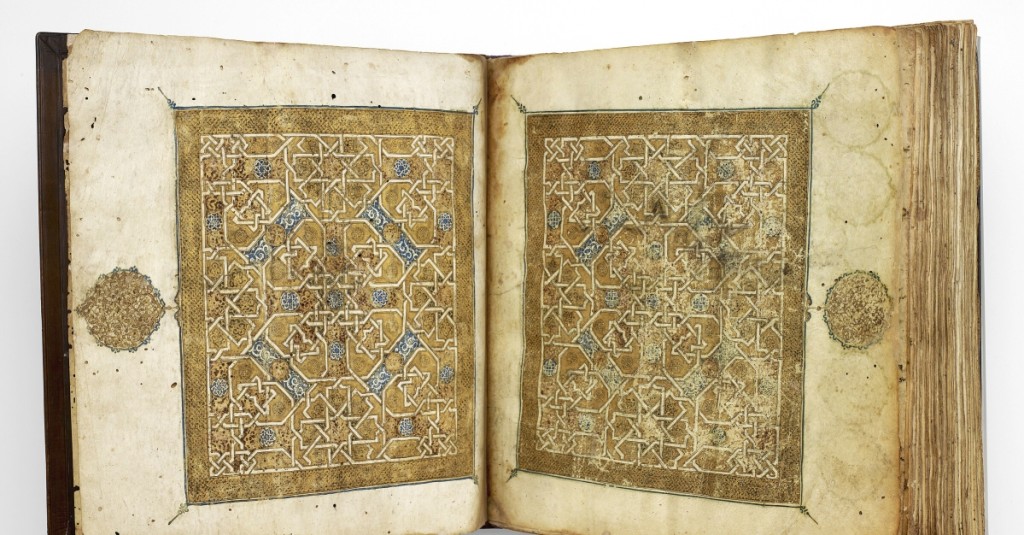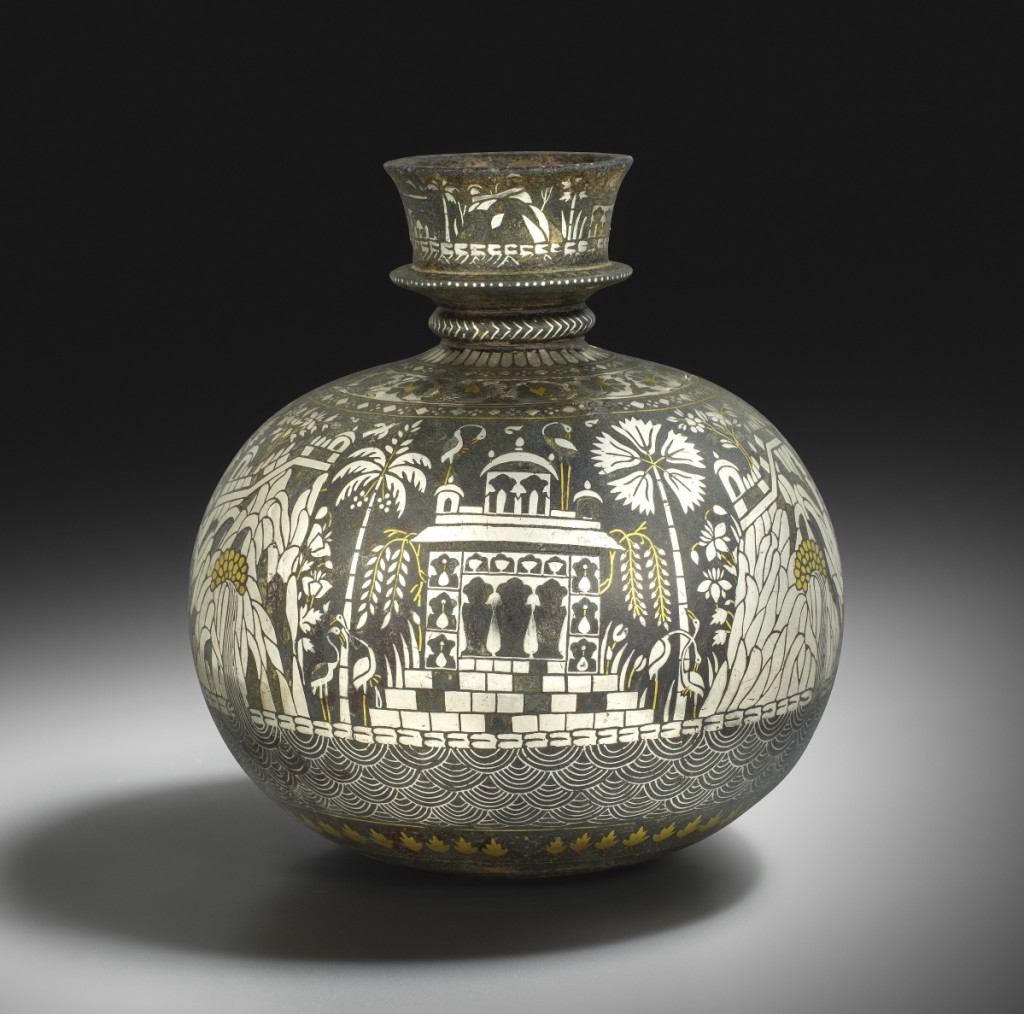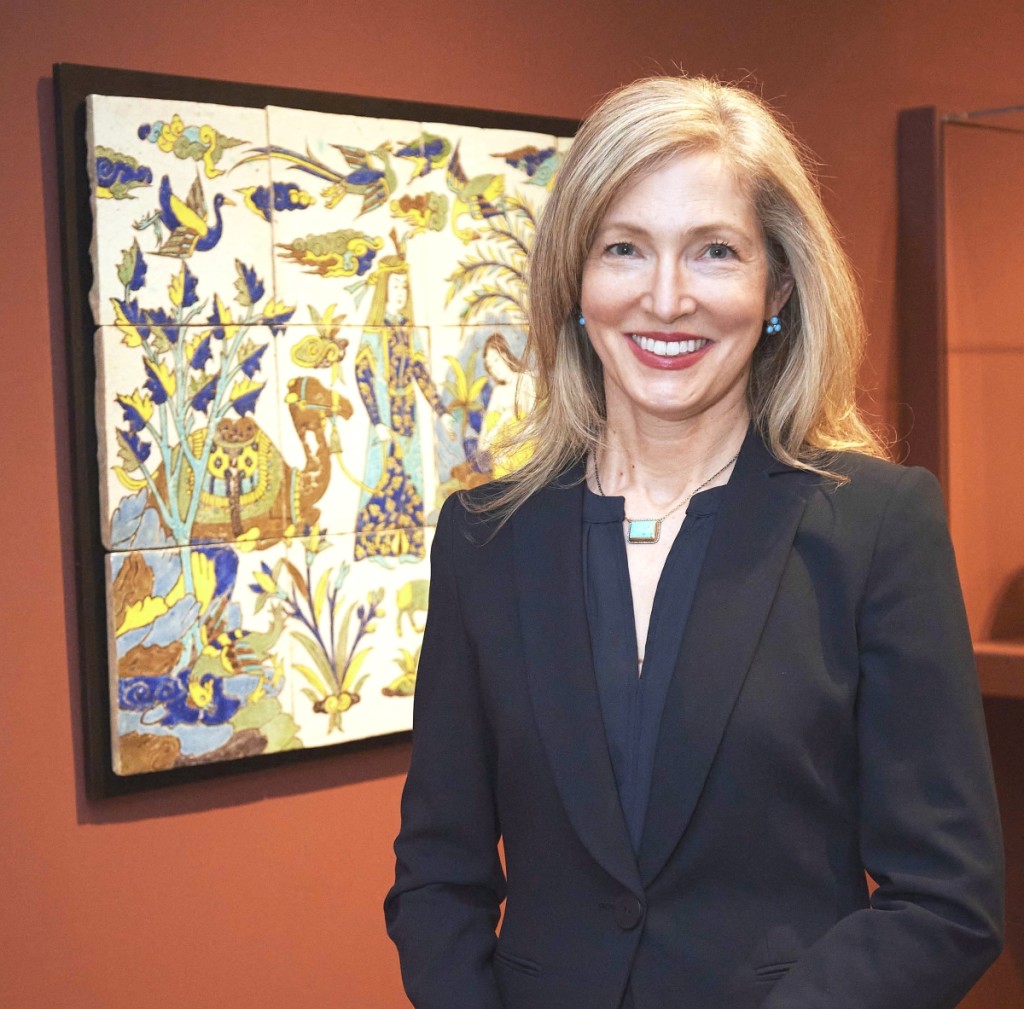The Museum of Fine Arts, Houston (MFAH), is creating new galleries for Art of the Islamic Worlds, slated to open in early 2023. Culminating a 15-year initiative, the galleries will feature masterworks from the museum’s own collection and from the distinguished Kuwait-based private collection of Hossein Afshar, which is on extended loan. With the addition of the new galleries, the MFAH will have one of the largest permanent displays in the United States for Islamic art. We sat down with the museum’s curator Aimée Froom to preview the new galleries, which at nearly 6,000 square feet, will more than double the museum’s gallery space for Islamic art.
When was a curatorial department first created for the art of the Islamic worlds at the museum? What has funded the existing collection?
The Art of the Islamic Worlds (AIW) initiative was established by the Museum of Fine Arts, Houston, in 2007 and funded by a patron group unique to Houston: philanthropists with strong cultural heritage links to historically Islamic lands who have committed to support acquisitions of Islamic art from across centuries and cultures – from North Africa to China; Central Asia to India. It is thrilling to be working together towards the early 2023 opening of the Art of the Islamic Worlds galleries, which will mark more than 15 years since the launch of the AIW initiative at the MFAH.
One of the ongoing exhibitions comprises nearly 300 objects from The al-Sabah collection, including manuscripts, jewelry, metalwork, ceramics, carpets, architectural fragments and scientific instruments. How did that long-term loan come about?
We are absolutely delighted to continue our wonderful partnership with the al-Sabah collection, which was announced more than a decade ago as a landmark agreement of cooperation by director Gary Tinterow and the late Sheikh Nasser al-Sabah al-Ahmad al-Sabah and Sheikha Hussa Sabah al-Salem al-Sabah. The al-Sabah collection is one of the most comprehensive collections in the world, comprising objects from across all Islamic lands from the Eighth to Nineteenth Century. We are grateful it will remain on view in its dedicated space in the Law building, near the new galleries.

Qur’an manuscript in Maghribi script. Morocco, end of Rabi’ al-Awwal, AH 718 AH / AD 1318 AD. Ink, opaque watercolor and gold on parchment. This magnificent Qur’an manuscript is a rare survivor, with a colophon identifying the patron and date of production. Like many Qur’an manuscripts from North Africa and Spain, this one was copied in the distinctive maghribi script, named after this region of western Islamic lands. Penned on parchment, it displays an elaborate program of illumination.
You were appointed curator a little more than eight years ago, and the following two new galleries were designated for the permanent collection. What were some of the key objects given by and on loan from collectors around the world?
The museum launched this initiative in fall 2007, with six objects acquired for the collection by key donors at what has become a biannual fundraising event. Among those six outstanding works were an extremely rare Qur’an manuscript and Ottoman tondino.
Over the last 15 years we have built upon this foundation with acquisitions, loans and gifts from generous local and international donors.
What exhibitions arose from the other major collection, the Hossein Afshar collection?
The Hossein Afshar collection is one of the most significant collections of Persian art in private hands assembled over the past 50 years, and it is our aim to fulfill Afshar’s wishes to share the collection widely though exhibitions, publications and public programs. With my team, we created two exhibitions from the Afshar collection thus far: “Bestowing Beauty: Masterpieces from Persian Lands” (MFAH November 2017-February 2018), which traveled to the High Museum of Art, Atlanta (December 2020-April 2021), and will open at the Toledo Museum of Art on April 23; and “Between Sea and Sky: Blue and White Ceramics from Persia and Beyond” (MFAH November 2020-May 2021), which featured Persian ceramics from the Hossein Afshar collection and global blue and white ceramics from the MFAH collections. The presentation in the new galleries will be the most extensive yet of works from the Hossein Afshar collection.
What are your plans for filling and utilizing twice as much gallery space for Islamic art as you have now?
Our permanent collection has grown significantly over the last 15 years and this, coupled with the several hundred works of art on loan from the Hossein Afshar collection, will allow us to showcase the breadth of artistic creation from across historical Islamic lands as well as great depth in all artistic media in the arts of Iran. We’re actually running out of gallery space already in our design plans.

Huqqa base with landscape, India, from the mid-Seventeenth Century. When the huqqa base was in use, bubbling water inside would have enhanced the sensory effect of the flowing stream rendered on the exterior.
Beyond physical displays, are there plans to host symposia or educational programs on the history of Islamic art and architecture?
We are working on a robust schedule of public programs for all ages around the opening of the new galleries and throughout the year. I am co-directing the next Historians of Islamic Art and Architecture biennial symposium at the MFAH and Rice University, March 2-4, 2023, with Dr Farshid Emami, assistant professor, art and architecture of the Islamic world, Rice University. Together, we look forward to bringing new audiences from around the world to Houston for the symposium.
Where will the new galleries will be sited?
The new galleries will be sited on the street level of the Mies van der Rohe-designed Caroline Wiess Law Building and will include nearly 6,000 square feet of exhibition space, as well as an adjoining garden.
What are some of the highlights of the inaugural installation?
I am so excited that we will be able to show for the first time the full strengths of our collection, as well as the extraordinary range of Persian art from the Afshar collection, in a presentation that highlights the similarities and diversity of the art, and features some of the most fundamental aspects of Islamic art, such as the art of the word, as well as universal, enduring themes, including faith and piety, courtly splendor, love and longing and earth and nature. A highlight of the inaugural installation is a huqqa base with landscape, India, from the mid-Seventeenth Century. It is extremely rare to find architecture depicted on metalwork, and this is the finest example of its kind among known bidri ware pieces. Palm trees, willows, flowers and an abundance of bird life overtake this seemingly abandoned structure. When the huqqa base was in use, bubbling water inside would have enhanced the sensory effect of the flowing stream rendered on the exterior.
Are there plans for outdoor spaces as well, featuring landscaping inspired by Islamic gardens?
Yes, plans for the outdoor space include the eventual installation of a fountain and landscaping inspired by Islamic gardens using local flora that thrive in Houston.
-W.A. Demers





